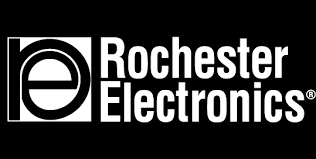The Proactive Approach to Obsolescence
Ensuring seamless operations and uninterrupted production
In today's fast-paced technological landscape, staying ahead of the curve is essential for businesses to remain competitive. It is imperative to have a comprehensive understanding of the costs associated with component obsolescence. Obsolescence cost measurement drives prioritization and risk reduction plans. Component obsolescence should never be addressed as an afterthought, but rather as a proactive consideration that ensures seamless operations and uninterrupted production.
Component lifecycles and their predicted EOL dates can be monitored and tracked using tools, such as Z2Data and I.H.S., among others. By integrating the project plan for end equipment, organizations can effectively forecast and simulate the costs involved in addressing obsolescence in a pre-emptive manner.
A few questions for any plan:
- Does the project plan need to include anticipated product refresh or redesign during its life? Are resources allocated to support these plans? These events are not one-time actions; instead, they necessitate consistent and regular evaluations by a multi-discipline team throughout the duration and life of a project.
- How will the business account for the capital locked up in long-term component sourcing? For many long-term projects, the sums of money tied up in last-time-buy stock represent a significant financial investment. Moreover, the uncertainty surrounding the potential outcome after 5+ years of storage adds an extra layer of risk.
- How will component obsolescence impact after-sales service commitments? Often forgotten are the costs of servicing a long and uncertain after-market tail.
- What effect would a shortened equipment life have on your customers and end-users? Prematurely ending the life of equipment or cutting short the service life can have costly consequences, including reputational damage. Additionally, it poses an immediate risk of customers turning to competitors as they are compelled to seek alternatives elsewhere.

Anticipating unknowns in the market and future sales
While component lifecycles are trackable, end-of-life (EOL) predictability is not infallible. Most predictions rely on algorithms. However, unpredictable "events" have the power to surpass mathematical calculations. Supplier consolidation, tool breakages, or natural disasters can completely disrupt the established rules and strategies.
Component obsolescence and the subsequent request for “Last-Time-Buys” instigate a requirement for customers to predict their future equipment sales. However, these forecasts often prove to be unreliable due to unforeseen market changes that conspire to hinder re-designs or alter market conditions.
By sharing the Bill of Materials (BOM) or critical parts lists for long-term programs with their component supplier, customers can gain a comprehensive understanding of project risks and proactively develop plans to mitigate them before obsolescence becomes a concern.
Planning for the unexpected is also part of the risk-management process. Rochester Electronics is the world’s leading authorized after-market semiconductor supplier. Trusted by major manufacturers, Rochester can provide not only ongoing component availability after the normal EOL, but also provide a unique insight into industry wide technology trends in wafer fabrication and IC-packaging supply chains.
With our comprehensive market analysis, Rochester offers customers a valuable and unparalleled perspective on component risk assessment. Our expert team provides independent advice that serves as an extra layer of protection, allowing businesses to mitigate potential risks and avoid the costly repercussions of prematurely terminating production or in-service support due to obsolescence. By leveraging our market-wide view, we empower our customers to make informed decisions and ensure the seamless continuation of their operations.
6 Steps of Successfully Planning for and Avoiding the Costs of Obsolescence
Obsolescence management begins at the design and product definition phases
Subscribe to Our Newsletter
Get the latest news, articles, and resources in your inbox weekly.
Manufacturers




